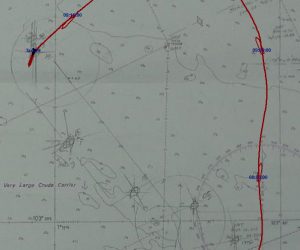Remote Navigation Audits
Why are Navigation Audits Required?
One of the biggest risks facing the owner or operator of a ship is having a major navigational incident.
Insurance company statistics indicate that collisions and groundings account for more than 50% of incidents, and these normally come with high costs. Analysis of such incidents reveals they are normally attributable to the human element, and rarely due to mechanical failures.
When appropriate practices are correctly and professionally implemented, the navigational risks are significantly reduced. As a result Navigation Audits are encreasingly being used to verify and enhance bridge team performance, and are a requirement under the OCIMF TMSA (Tanker Management Self Assessment) scheme.
What are the limitations of current Navigation Auditing practices?
Traditionally Navigation Audits have required an auditor to sail with the vessel to monitor the bridge team performance.
This approach suffers from the fundamental and significant drawback that the presence of the auditor on the bridge inevitably affects the behaviour of the bridge team, and there is no guarantee that the practices observed during the audit are maintained when the auditor is not present.
Also the costs of having a suitably skilled auditor to attend the ship (which could be anywhere in the world) for a sufficient period of time to monitor an adequately wide range of navigation activities can be significant. These costs can increase in an unpredictable manner by changes in the ship’s schedule, and the requirement to pay for the auditor’s time and subsistence costs whilst awaiting delayed arrival or departure.
As an alternative to on-board auditing, there has been a tendency to perform audits whilst the ship is alongside in port. But such audits may be reduced to a basic check of relevant bridge paperwork only which may not even be performed by experienced master mariners, and do not provide any meaningful analysis or review of the actual operation of navigational practices on board. As a result they will have little or no impact on the reduction of navigational risks.
A new approach –the Remote Navigation Audit
Avenca has developed a Remote Navigation Audit (RNA) service in collaboration with leading independent ship inspection consultants. This service is now being used by a growing number of leading shipping companies to provide increased assurance of their navigation practices.
The RNA is based around the analysis of your ships’ Voyage Data Recorder (VDR) data. A trained auditor (and qualified Master Mariner) uses their experience and knowledge to comprehensively review the data against regulations, best practice and company procedures using Avenca’s sophisticated analysis software. The use of our software ensures that we can provide the same consistently high level of analysis independent of the Make and Model of VDR, in a way that’s just not possible using the VDR manufacturer’s replay software.
The output from the RNA is a report which contains observations and recommendations that will enable you to take action to enhance navigational practices. These are backed up by screenshots and video clips, which can be used to debrief the bridge team, and/or communicate the lessons which can be learnt across the fleet.
An example of a screenshot from a Remote Navigation Audit is shown below, which clearly shows the lack of correlation between the manual position fixes marked in pencil on the chart compared with the course recorded by the VDR (solid red line). This would never have been picked up from a paper-based audit in port.

Audit example: Plot from Avenca’s Audit Analysis software
The benefits of Avenca’s Remote Nav Audit approach –
- You get to choose the time period and location for the audit (i.e. you can choose the approach to a particular port, or transit through a TSS etc. to target known or suspected problem areas/ships for the audit)
- Fixed remote nav audit costs known in advance (i.e. saves on the variable travel & waiting times/costs of conventional audits)
- No impact on Bridge Team by presence of the auditor, enables actual routine practices & procedures to be reviewed
- Depth of review – e.g. the data can be paused/replayed by the auditor more than once to check exactly what’s happened, in a way that’s not possible with a conventional audit.
- A video of the replay can be used to debrief the bridge team, and/or communicate the findings (good and bad) more widely across the fleet (desensitised if required).
- The routine use of your VDR data ensures that the VDR is functioning correctly, and the crew know how to save and download data, so that VDR data should always be available in the event of an incident.
All of which mean that an RNA is a highly cost effective way to identify navigation practices where improvements can be made, so enhancing safety and reducing the risk of navigational accidents.